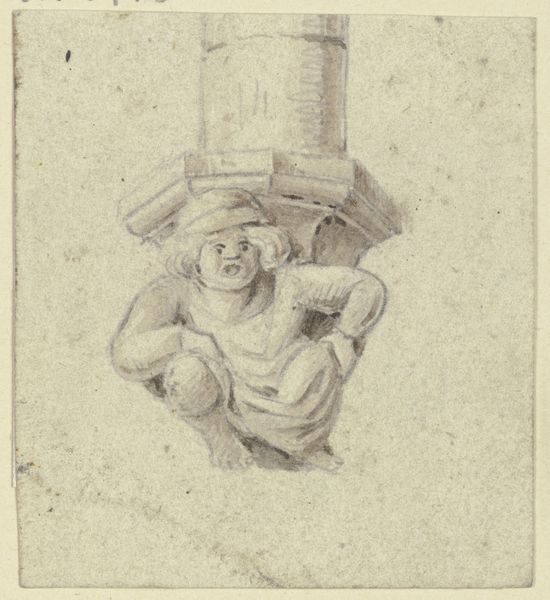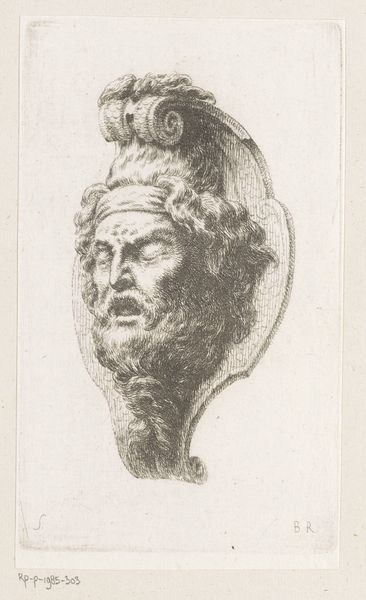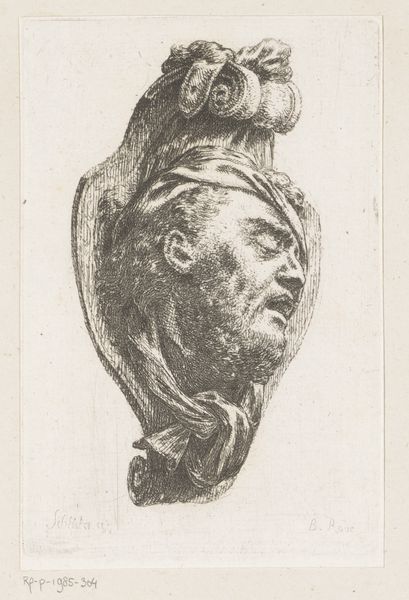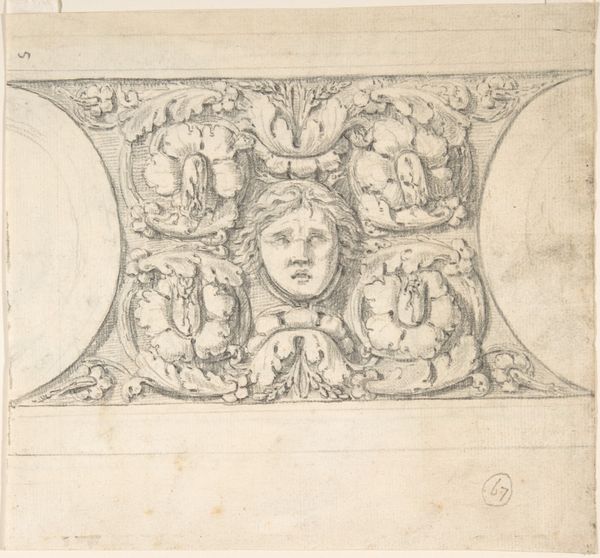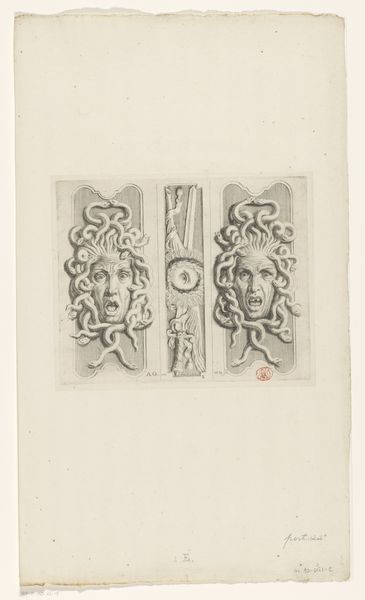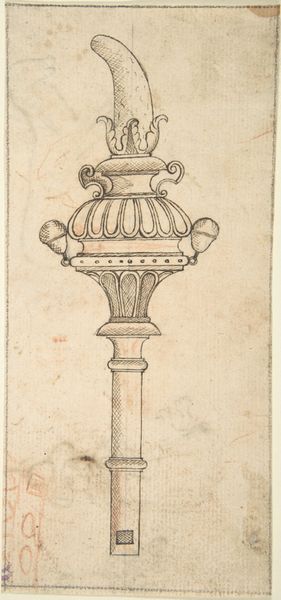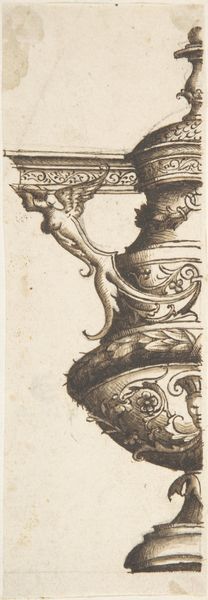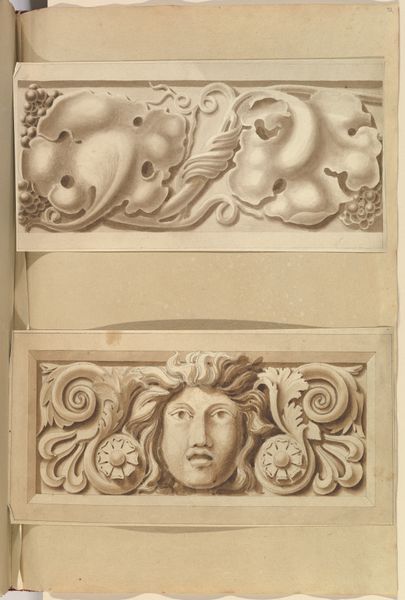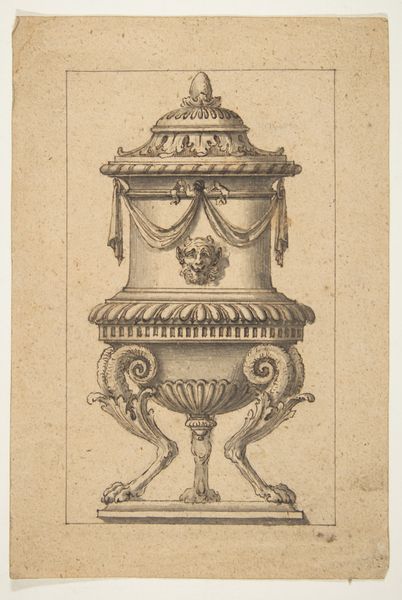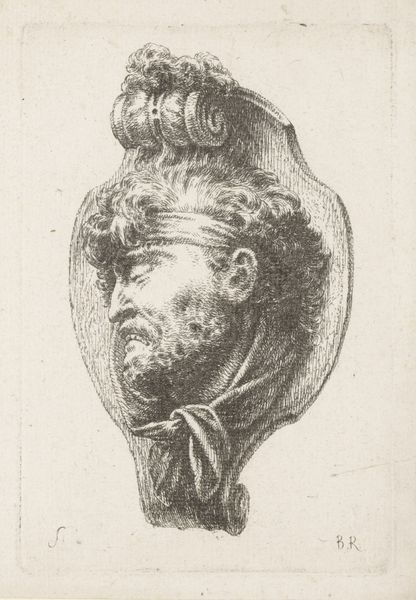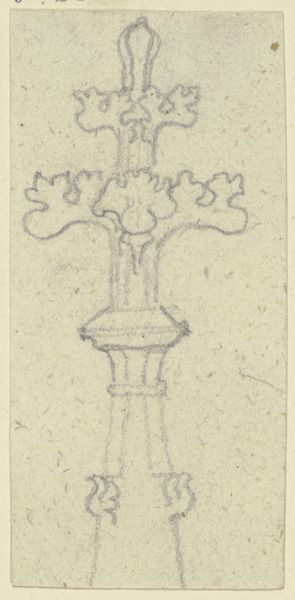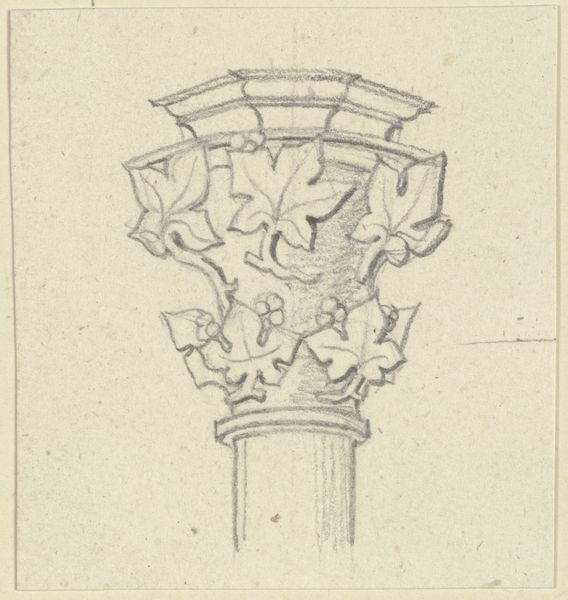
drawing, paper, pencil, architecture
portrait
drawing
classical-realism
paper
pencil
architecture
Copyright: Public Domain
Curator: Here we have a drawing entitled "Halbrunde Wandvorlage mit Blattmasken-Konsole," which translates to "Semicircular Wall Template with Foliage Mask Console" by Karl Ballenberger, found in the Städel Museum's collection. Editor: There’s something hauntingly stoic about this face. The pencil work seems incredibly delicate, almost like a memory sketched onto the page. It gives the subject a weighty kind of presence. Curator: Absolutely, the use of pencil and paper allows for fine details and subtle gradations of tone. Ballenberger clearly valued the classical aesthetic; note how the figure's hair is replaced by meticulously drawn leaves. It merges classical forms with elements derived from nature. I wonder, what were the labor conditions involved? These kinds of templates were used to create architectural elements for elite structures; there was likely a division of labor. Editor: I am curious how Ballenberger and other draftsmen saw themselves – were they just manual laborers? Were they regarded as artists in their own right? The image of the Green Man also emerges, which has, historically, had so much social and symbolic weight. Who got to participate in making decisions about the forms that would represent them publicly through art and architecture? What power structures did designs like this reproduce? Curator: Indeed. And think about how such architectural elements often represent power, privilege, and the aspirations of those who commissioned them. The production of such images and templates necessitates resources and, therefore, contributes to a capitalist system. Editor: Looking closely, the rigid, almost harsh lines, especially around the figure's eyes, makes me think about class struggle too. This imagery was supposed to communicate one thing to those in power and maybe, simultaneously, evoke a different feeling of resilience from those excluded from that power. It reminds me of Frantz Fanon’s argument that art can reflect resistance as much as oppression. Curator: It's fascinating to think about the multiple layers of meaning and intent embedded within this drawing. Its original function may have been purely utilitarian as a template but by scrutinizing materiality and technique we reveal more, like its potential socio-political dimensions. Editor: This artwork highlights the constant, ongoing dialectic between art, power, identity, and resistance, one stroke at a time.
Comments
No comments
Be the first to comment and join the conversation on the ultimate creative platform.
